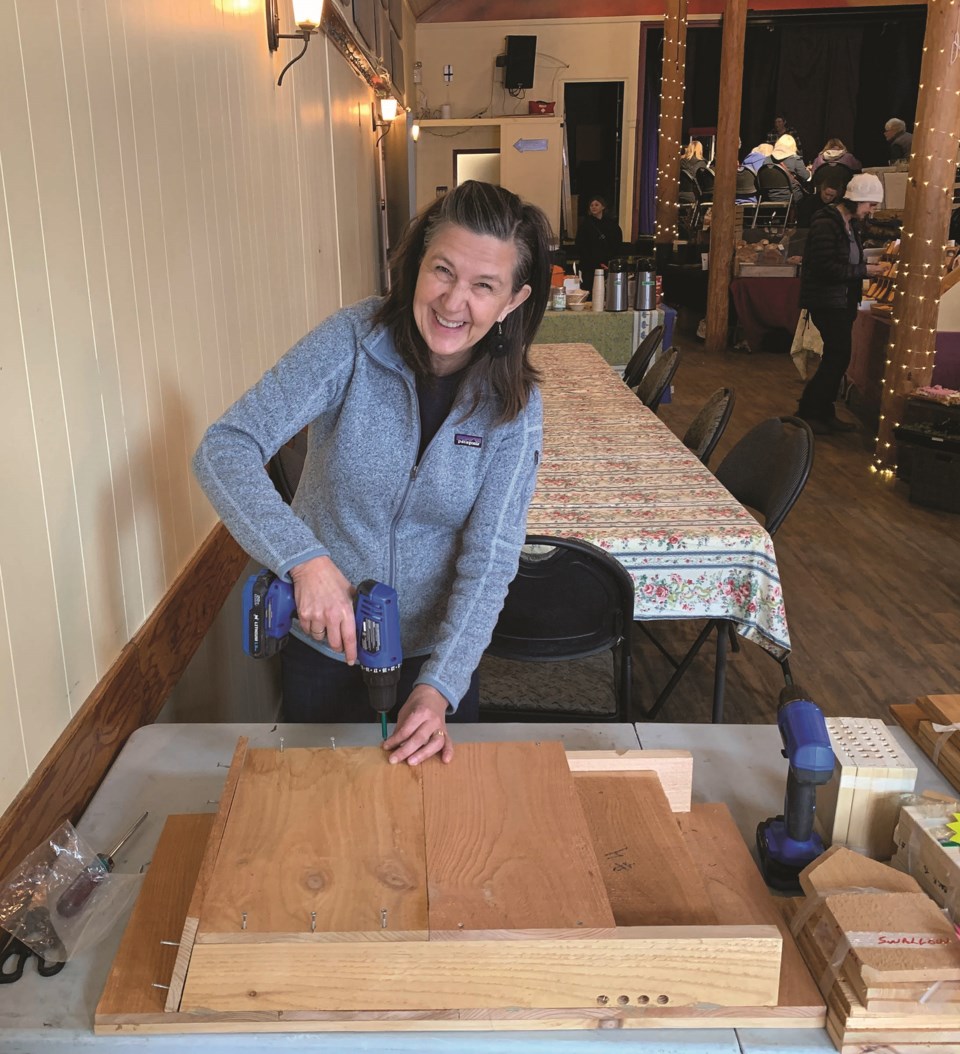Celebrate the arrival of spring by helping local wildlife! For the first time since 2019, community members of all ages are invited to join biologists from the Sunshine Coast Wildlife Project to build bat houses, swallow and owl nest boxes, or mason bee homes. Learn how to get involved in local habitat stewardship and wildlife monitoring activities.
The Halfmoon Bay “Homes for Wildlife” workshop will take place from 10 a.m. to 2 p.m. on March 26 at Coopers Green Hall. Other workshops are being held along the Sunshine Coast: March 25 at Frank West Hall in Gibsons; April 1 at Mission Point House in Davis Bay; and April 2 at the Tranquility Garden behind the EarthFair Store in Madeira Park. Kits take 30 minutes to assemble; $25 for swallow boxes and $40 for all others. Ready-made kits are also available. Want to participate but feel the cost is prohibitive? Contact Michelle Evelyn at [email protected] or the Halfmoon Bay Community Association website for payment options and further details about the workshops.
The Wildlife Project needs the help of all communities on the Sunshine Coast to monitor bats for the spread of the deadly fungal disease White-nose Syndrome. It attacks bats during their winter hibernation, resulting in them waking up to clean the fungus from their skin using valuable energy, which could result in death from hypothermia and starvation. You can report any sick or dead bats found before May 31, by email at [email protected] or by calling 604-989-1007. Observations help researchers identify regions with unusual bat activity, and bat carcasses tested for the fungus. Never touch a bat with your bare hands! If you or your pet has had direct contact with a bat, you may need further information regarding rabies risk.
You may discover that some bats have winter roosts in woodpiles, sheds, or under house trim. Soon many bats will be returning from their winter hibernation sites to their summer roosts. As natural roosting habitat has become scarce, several species have adapted to living in attics, roofs, eaves, and siding. If you have observed this, let the Wildlife Project know. They can provide advice about living with bats, guidance on safe exclusion, if desired, and tell you how to participate in the Annual BC Bat Count this summer.
The Wildlife Project works with all sorts of local animals, from turtles and salamanders to frogs and toads to owls, goshawks, and bats. Their biologists conduct surveys of species at risk and work to improve habitat through building wetlands, naturalizing shorelines, and installing turtle nesting beaches, and other activities. Michelle says, “In April, there will be opportunities to volunteer by helping to plant native plants at wetland restoration sites in the West Sechelt Wildfire Area in the Sunshine Coast Community Forest. We welcome the community to become involved.” Please email [email protected] if interested!
Who is behind the good work being carried out by the Sunshine Coast Wildlife Project? Led by husband-wife team, David Stiles and Michelle Evelyn, they are “a small group of biologists working to conserve the Sunshine Coast’s precious natural heritage for generations to come. Since 2006, we have been working with community partners to help conserve wildlife and their habitats.” For more information, visit their website at www.coastwildlife.ca or Facebook page www.facebook.com/coastwildlife.
If you have any ideas for column content or have a community event or story you would like to share, please send an email to [email protected].



